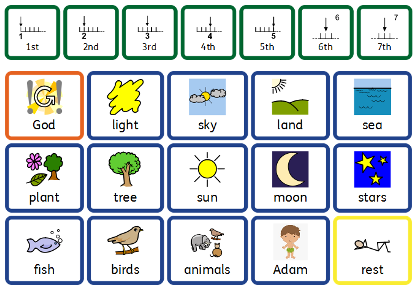How I… enable SEND pupils to understand creation
15 December, 2020, Vincent Saunders
Each day I face the challenge of how to sell an abstract idea to pupils who struggle with concrete ideas. You want them to walk on a path that they cannot see when they can only just comprehend a path that they can physically walk on. Recently as a link to the term’s theme of ‘Light Fantastic,’ I wanted the pupils to engage with the Christian creation story, (God said on day one, ‘Let there be light.’) The approach I took allowed pupils to glimpse the abstract through learning activities that they were easily able to access and understand.
I began with a sensory story. A sensory story makes the whole tale more real and although at times pupils can be shocked, that sense of awe and wonder is more likely to end up with them remembering what they have been listening to. When God made the oceans, I sprayed water in the pupil’s faces, when God made the trees, I threw leaves all over the classroom, when God made animals, I jumped around the room pretending to be a gorilla. The end result of this, my pupils were able to recount most of the things that God created.
To tap into the imagination, I followed up the sensory story with an animated story. I have not taught a pupil at our school yet that does not enjoy a cartoon. The screening of the animated story gives the pupils an alternative opportunity to encounter and engage with the story of creation.
Most of our pupils use some kind of AAC (Augmentative and Alternative Communication Aid.) This takes many forms from PECS, (Picture Exchange Communication System) books to intuitive I-Pad software that uses a symbol to speech engine. Somewhere in between these is the POD, (Pragmatic Organisation Dynamic Display) board. Throughout every lesson on creation I had on display a set of picture prompts that utilised coloured semantics and contained all of the necessary information required. I referred to this during each lesson and it acted as a constant prompt for the pupils.
The final activity tapped into a different sensory approach. At the beginning of this unit of work the pupils were all given a blank A2 sheet of card. This card was white. I explained to them that this represented the light that Christians believe God brought to the world. As we experienced each day of creation, the pupils completed another piece of their creation pictures. They painted the sky, the land, they painted trees, they glued on animals, they filled the seas with life and used paint and glitter to make the sun, moon and stars. By the end of the unit of work they had created the world just as God had created the world.
By using a multi-sensory approach, the pupils were able to fully engage with the creation story and had multiple opportunities to experience, understand and recall the required information.
